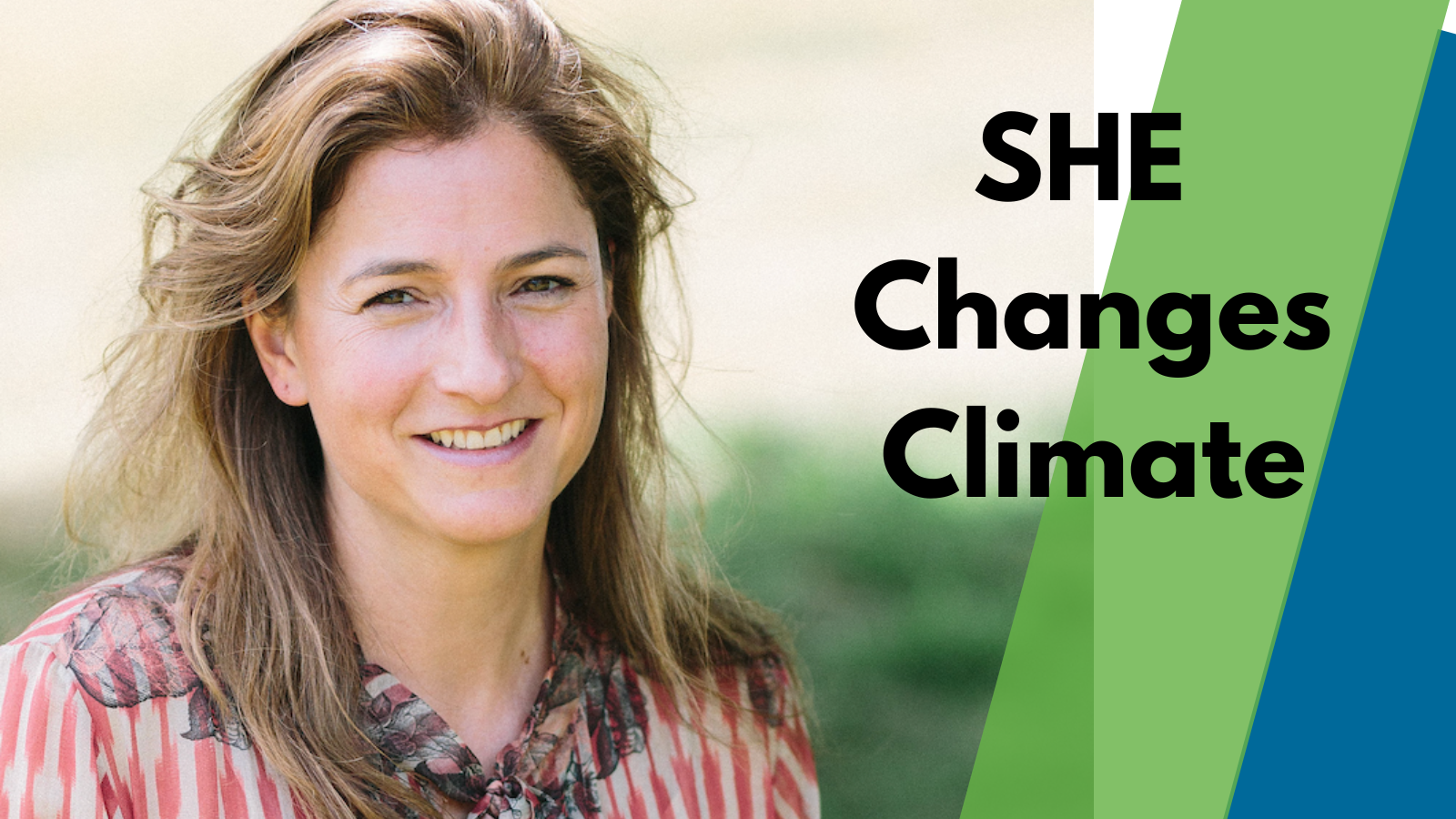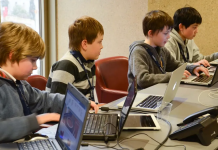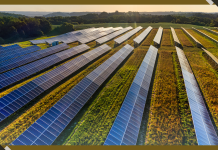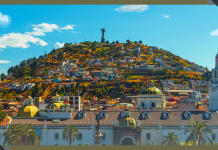In honor of International Women’s Month, The Planetary Press is highlighting women around the globe who are driving positive change for our planet and global community. Today, we are thrilled to introduce you to climate activist and Co-Founder of SHE Changes Climate, Bianca Pitt.
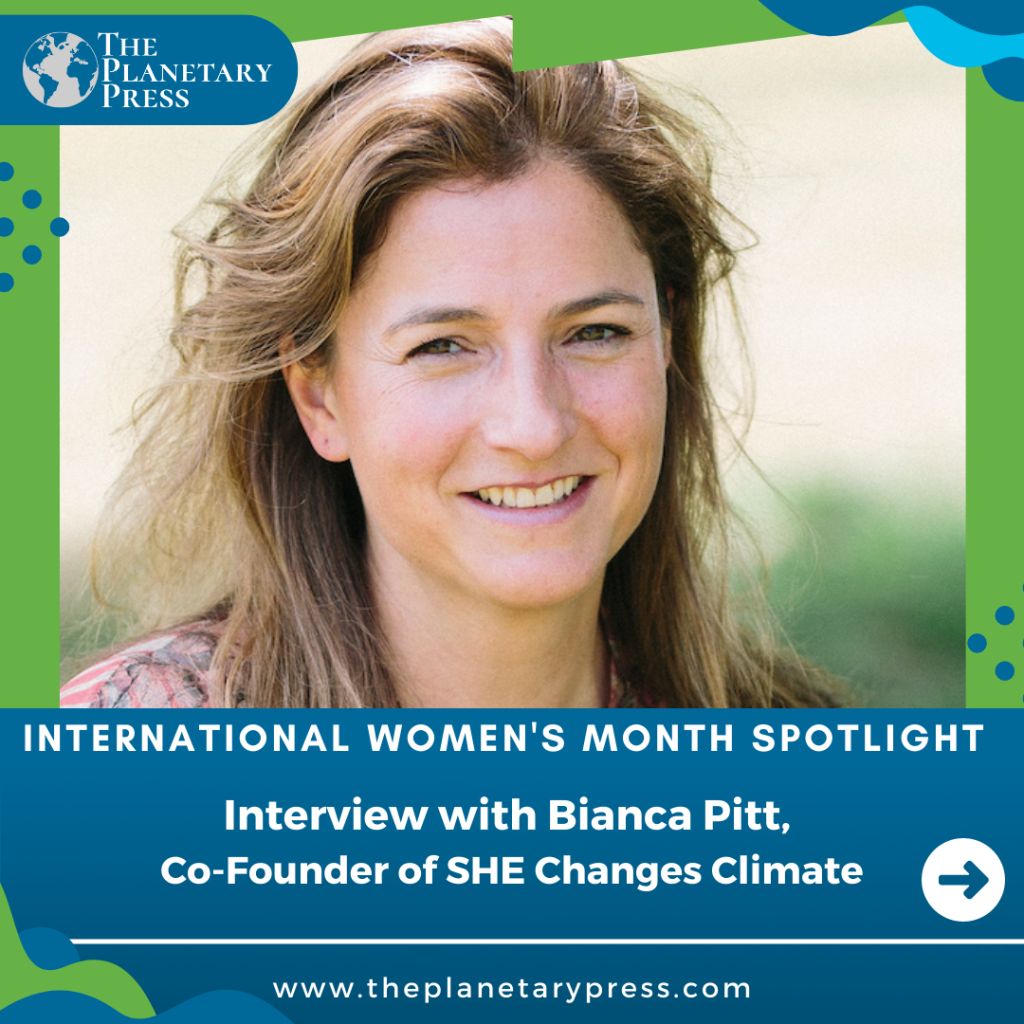
You have an exceptional career. Can you share some of your journey from studying law to a career in business, media, and corporate finance to climate activism?
I studied law in Austria, which gave me a good foundation on the many legal frameworks that form both our legal history and the framework of the rules that we have been willing, as humans, to be bound by. Law is a compromise developed over many centuries, goes beyond governments, and is an important expression of our civilization. It also helped me read and digest large amounts of text, develop analytical skills and understand connections and context. I wanted to work with people across many countries, so I decided to go into business. My career path led me from consumer packaging to publishing and then on to corporate finance, where I first got to read the FT on a daily basis. This helped me form a good understanding of our industries and economic systems, as well as corporate structures and deal-making.
It was only when I took time off from this work to have my first child that I got to read outside my industry interest and began to get a sense of the emergency we were in, which was then seemingly unnoticed by the population at large. I decided to put my career on hold and instead focus on transforming our operating systems to make them sustainable – clearly, I like a bit of a challenge!
You are the Co-Founder of SHE Changes Climate. Can you tell us about your work and mission and the inspiration behind the organization?
After spending about ten years looking at the state of our ecosystems, researching who was doing what to stop/reverse the decline of the climate and biosphere, connecting actors in the space with each other and advising a range of NGOs and charities in the environmental sector, I came to understand – almost by chance – that it is really our social inequalities that have caused this crisis.
The lack of participation of women in leadership has led to a blind spot, a vacuum, where only the masculine view and priorities are being heard. We know that women have a material effect on climate policy. Countries with more female parliamentarians have better climate policies and lower emissions. The same is true for companies – more female board members lead to better results on climate policy and implementation. Compared to men, women are more likely to spend money on low-emitting products and services. They are more likely to take public transport, drive smaller cars, do staycations rather than fly abroad for holidays, eat more vegetables than meat etc. Women’s experience and perspective are required to redesign our ailing and failing systems: the finance, transport, food and energy system. And yet they are missing from leadership pretty much everywhere.
I co-founded SHE Changes Climate with two other female environmental leaders, Elise Buckle and Antoinette Vermilye, to bring attention to the lack of women leading international climate negotiations, the Conference of the Parties (COP). Only four women have led the COP as President since its inception. The COP is not delivering on the 50:50 Vision it set out in the Gender Action Plan, which says that women should be equally represented at all levels of the negotiations. We are now calling for a Co-Presidency to be established, a woman and a man to lead the conference together, given that we seem unable to shift away from the male-led model.
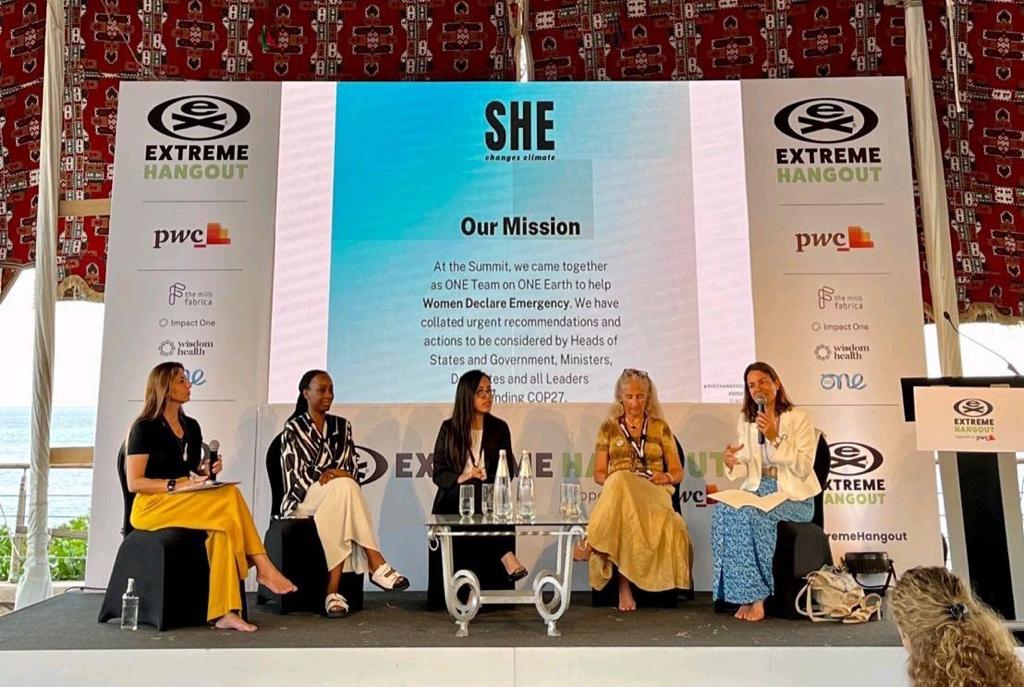
What we need to see now are results, not excuses and procrastination. We are about to have the 28th COP, and emissions are still rising. This tells us that the current leadership structures aren’t working, that we aren’t getting what we need out of them, and that this system is also faulty. The cost of these inadequate structures is loaded onto the shoulders of the poorest people on the planet – those that live in the Global South, have to work in the field, and become homeless when increasingly violent weather not only erodes their livelihoods but destroys their very existence.
The ecosystem collapse is also increasingly felt by people in the West: the pandemic was a stark reminder that our environmental, social, and economic systems are closely interconnected. Women were more likely to lose their jobs due to Covid and less likely to return to work. The gender gap is now estimated to be 132 years (according to the WEF), or when looking at UN metrics, a staggering 300 years.
Economies that fail women fail. We just have to look at Afghanistan as an example of that. Exclusion hurts everyone. Diversity, on the other hand, benefits everyone. We work both with top-level and grassroots leaders to shine a light on the many women who are Champions of Solutions and bring Climate Action. We run campaigns and also have negotiated behind the scenes to get a more equitable system. On balance, I would say that social media campaigning has been the most effective method of driving awareness around this topic. Whether it achieves the change that is required remains to be seen. We have had over 170 million impressions of the campaign so far, and I think that is a good result already and remarkable, given that we started the campaign from our kitchen tables during lockdown.
The inspiration comes from the many women and girls out there who so bravely and strongly walk their path, holding their families and communities, speaking truth to power, and fighting for a better world for their children and people. It is their ethos that we want to amplify and see established in all our cultures. If we don’t care for humanity, we will not go on existing. We are not interested in cynical viewpoints. We want to see collaboration across the planet and a sustainable future built for all. The mission is to get women in all their diversity to sit at the decision-making table.
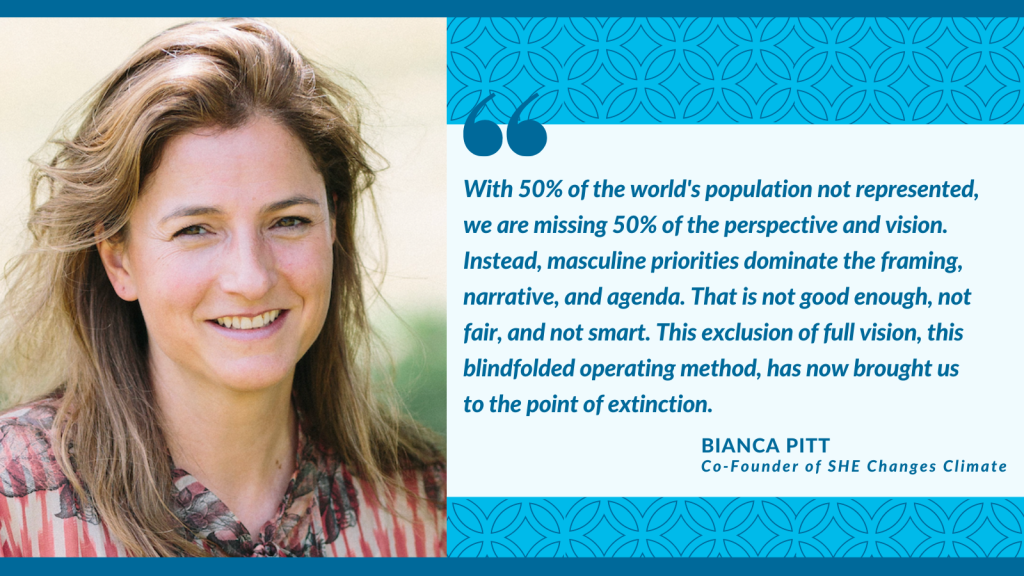
Women are often at the frontlines of the climate crisis. Studies have shown that women are disproportionately impacted by climate change and its related environmental and social externalities. Yet, they are often not given a seat at the decision-making table. How can advancing gender equality and empowering women revolutionize climate policy negotiations and help deliver the necessary solutions to this planetary emergency?
We know we are missing the female lead from the top-level negotiations. The COP26 team that the UK government appointed did not have a single woman on it. With 50 percent of the world’s population not represented, we are missing 50 percent of the perspective and vision. Instead, masculine priorities dominate the framing, narrative, and agenda. That is not good enough, not fair, and not smart. This exclusion of full vision, this blindfolded operating method, has now brought us to the point of extinction.
It would be a great shame if we failed as a civilization because we cannot bring ourselves to close the gender gap. I give you a practical example: Only 2-3 percent of VC capital goes to women-led teams. How are we meant to innovate our way out of the climate crisis if we are not willing to invest in 50 percent of the world’s population? Assuming an equal distribution of talent, but unequal distribution of opportunity, we have alpha hiding in plain sight!
Another example is the exclusion of the indigenous voice: 80 percent of the world’s biodiversity is on Indigenous territory. Why are we not asking Indigenous Leaders to lead us out of the biodiversity crisis, sit on all boards, and sit in government when they are best in business in getting nature to flourish again? We are not acting in a smart, rational way, and we are also not allowing ourselves to express genuine emotion about the situation at the moment. Women are the key lever to achieve change, in the same way as you bring in new architects and builders if you want to redesign a house. Einstein said that “We can’t solve problems by using the same kind of thinking we used when we created them.” Women are the largest excluded stakeholder group, and we want to bring them into leadership now to sort out the mess we are in.
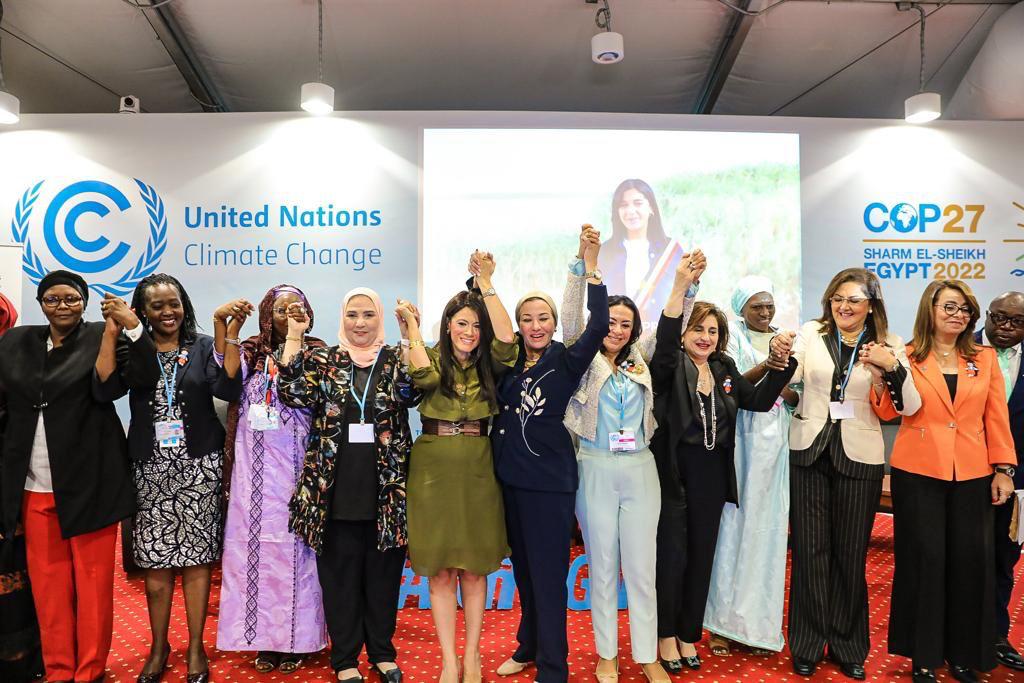
Since launching in 2020, what are some of your favorite SHE Changes Climate achievements?
I have been so thrilled with the work we – our team of volunteers and our great network – have achieved. There has been huge interest from the press on this (once you get past the barrage of negative news that seems to be dominating our headlines) and from readers worldwide. We get messages every day from women and men who want to join our team and help in one way or another.
SHE Changes Climate is very much a co-created campaign, which was designed to be owner-less, so everyone can run their own SHE Changes Climate campaign. We naively thought we would do this as a one-off, but have found that our work is needed, and we have to set up a more permanent presence. We love receiving supportive comments on social media and in the press and are grateful for the amazing leaders who have lent and are continuing to lend their voices to the campaign (Christiana Figueres, Xiye Bastida, Emma Watson, Emma Thompson, Ellie Goulding, Laurence Tubiana, Katherine Wilkinson, Helena Gualinga etc.). Also, speaking to high-level officials (the COP26 President, CEO, leaders within the UNFCCC etc.) and working with them on achieving more of a 50:50 balance. My own personal achievement is that I have overcome my fear of public speaking.
How can people join and support the work of SHE Changes Climate?
We very much welcome volunteer and pro-bono support on all levels. Our work cannot be done without funding, so funding and fundraising are something we are currently looking for help with. I would very much like to also use TikTok and Instagram to spread our message, so if you can help us with this, please get in touch!
You have spoken about the panic you felt as a new mom when reading about climate change and the environmental challenges plaguing our planet. With climate anxiety and despair on the rise, what advice do you have for parents looking to effect positive change for a healthier, more sustainable future?
We all have to use our existing expertise and networks to make a difference. Everyone can become a leader, but sometimes it is easier to group together with others to create something or to create your own network, even something as simple as a WhatsApp group of like-minded people. I want to encourage parents to become activists, whether they are working from home, are on the go, or are in offices. I also want to encourage them to speak their mind, don’t be afraid of speaking up.
At the same time, we have to create safe spaces at home for our children, not burden them with the woes of the world when they need to also relax and have fun. It is probably best to be an activist during the day and a goofy clown, chummy friend and good listener in the evening. That said, it is nearly 10 pm, and I am still up working, having put my children to bed. Getting the work-life balance right is hard when we are trying to save the world and have to tackle humanity’s greatest challenge. Having senseless fun with our children should be our moment to relax as well– we all deserve it.
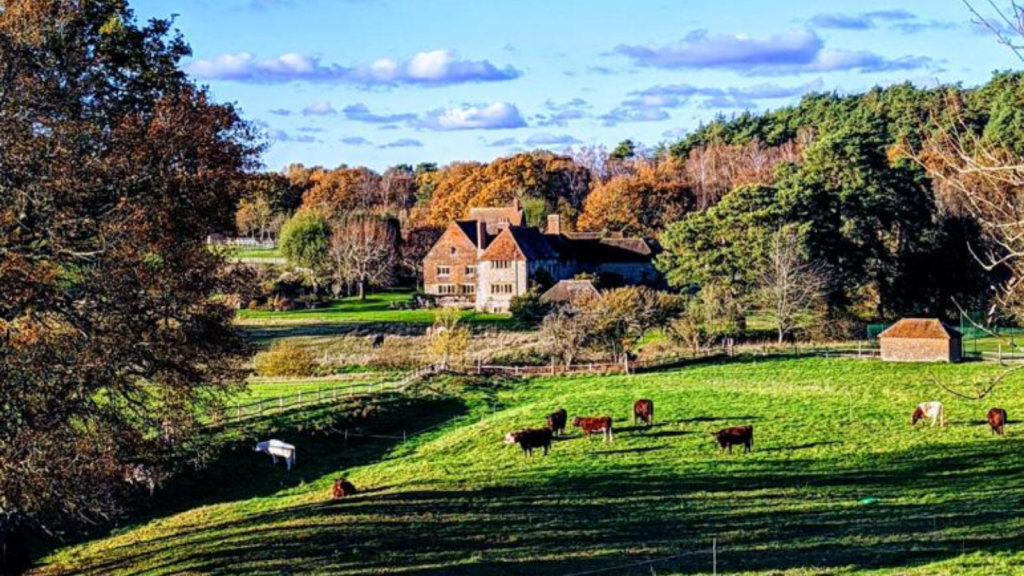
Alarmed over the toxic environment in the city, you moved to the countryside and started a farm. Please tell us more about this experience and how it has changed your life. What has been one of your favorite farm-life experiences?
Moving to the countryside was daunting at first as I was not sure how we would be received in the community as newcomers. My concerns, however, were misplaced. We were welcomed in a very friendly way and found that people wholeheartedly supported our mission to restore the land on our farm. After letting the meadows recover from overgrazing by horses and seeding some wildflowers, we started to see both flowers and wildlife come back.
Every year we notice changes to the landscape, which is hugely exciting for us. At the same time, we also witness climate change first-hand: more extreme weather and very prolonged periods of drought that creates a huge problem not only for our farm animals but in particular for those creatures that are out there and not fed and watered by human beings. We also have some intense storms now, seeing trees being knocked over everywhere or simply broken in half. To witness this is scary.
We have entered a joint venture agreement with a young farming couple (who left jobs in Accounting and Window Dressing to work on a regen farm and run a market garden) to set up ‘Slow Grown Farm’, a regenerative farm, which means we are careful stewards of the land and bringing it in line with old farming principles of no chemical input and manual intervention only. This work on soil and landscape restoration and careful animal husbandry has been very rewarding already and has provided more people with a living and creatures with a space to live– you can follow the work on Instagram!
One of my favourite moments has been watching young starlings do flight exercises in our meadows and trees. A huge murmuration will come and land in the high grass, where you can only hear them but not see them. I sometimes sit for 20 minutes before they fly again, waiting with a camera and listening to their very excited chirping! A cow licking my hand is also a favorite moment – it takes me back to my childhood in Austria – they smell of hay. And showing it all to my children, who will hopefully develop a love for nature too.
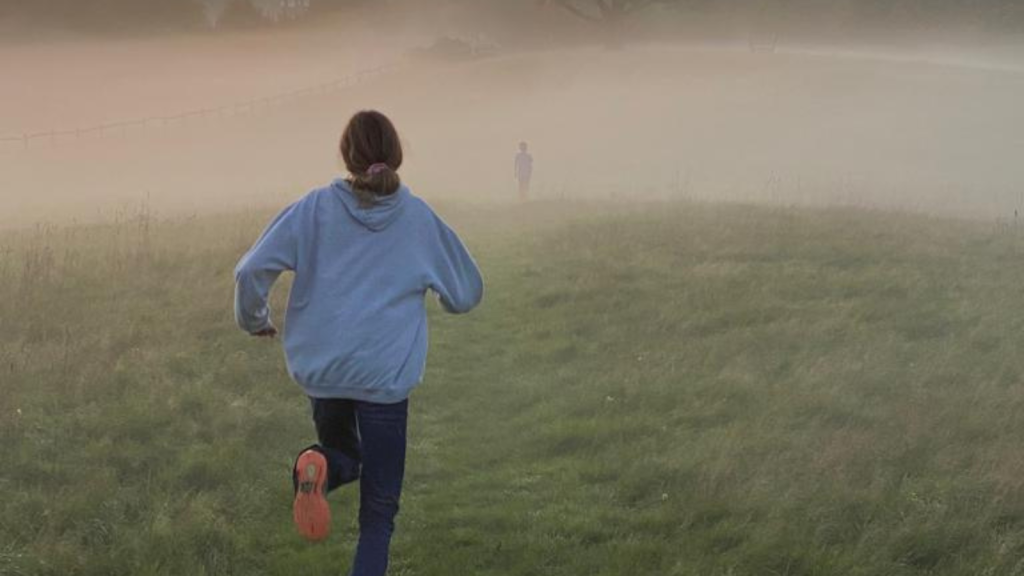
What are some of the challenges you have faced along the way and how have you overcome them?
A great challenge for me was that I did not like public speaking. Apparently, that is common – 78 percent of people fear it more than death. I decided to bite the bullet – after all, nature cannot speak, and we have to give it a voice – and not care what people think about me. It has been one of the most rewarding moments in my life – losing the ego and just getting on with the work. Humour also helps overcome moments of frustration over the lack of climate action. Raising children in this day and age is also not easy and I have found it challenging at times. How do we keep a smile on our faces when we know the future ahead is not rosy? Taking every day as it comes and putting great value on family life has been crucial to make it all a good experience.
What do you see as one of the biggest challenges facing our global community that requires greater attention?
I think people are currently stagnant and immobile on climate and biodiversity because they have not addressed the trauma they have suffered on an individual, ancestral and societal level. Addressing what is keeping us in arrested development will help us move on. Forgiveness is also a concept that has to be exercised again – we have to forgive ourselves and each other. Then we can make progress, feel light and mobile again, and be energetic to tackle the challenges that lie ahead. We have also disconnected from nature – feminine energy and values can help us reconnect with it again and can help us find our way back to Mother Earth.
What is one of your favorite solutions to solving one of the world’s challenges? (ex. Climate change, biodiversity loss, etc.)
Gender equality – obviously!
What advice would you have for your 13-year-old self?
Be yourself, no matter what they say.
What book would you recommend to inspire people?
- Invisible Women: Exposing Data Bias in a World Designed for Men by Caroline Criado Perez
- Woman Made: Great Women Designers by Jane Hall
Keep up with Bianca and SHE Changes Climate!
Website: www.shechangesclimate.org
Twitter: @sheclimate
Facebook: @SHEClimate
Instagram: @SHEClimate
LinkedIn: @SHE Changes Climate

